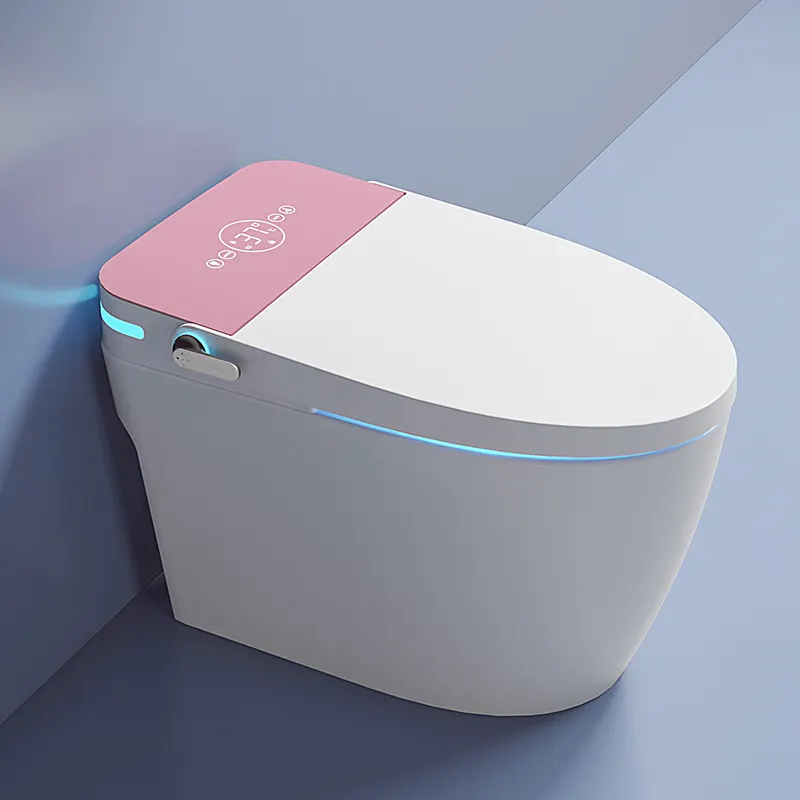A smart toilet, by definition, uses integrated technology and data to interact and connect with the user. It’s designed to improve the hygiene level and personal cleansing experience. Moreover, it gives insight to stakeholders to save manpower & resources, and enhances safety, operations and customer experience.
The concept of modern smart toilets originated in Japan in the 1980s. Kohler released the world’s first smart toilet named Numi in 2011, which allows users to set their ambient lighting, adjust the water temperature, and enjoy music with the built-in radio. Now, as technology marches forward, smart toilets have been hailed as the next big thing with more advanced functions and features.
These new modern toilets are part of China’s efforts to implement AI into daily life and come hot on the heels of smart bins and AI-powered traffic lights.
There are many high-tech public toilets in Hong Kong tourist spots to overhaul conditions in the city’s public conveniences. Shanghai has also built around 150 smart public restrooms to improve their tarnished image.
A smart toilet system is also a saviour for the organizations where they have to manage multiple toilets – it reduces manpower and keeps restrooms cleaner. The system can also assist cleaning companies in managing their staff and timetables effectively.
HOW SMART TOILETS WORK
Smart toilets have different sensors that perform multiple functions beyond just flushing. These sensors use infrared rays and ultrasound to detect if the person is inside the washroom and how long he has been sitting there. These sensors are equipped with Wi-Fi connectivity and provide real-time data. For example, if the person experiences a fatal incident, the motion sensors will detect it and send an alert to facility management to check on them. In addition, the sensors also monitor the air quality inside the restroom.
BENEFITS OF A SMART TOILET
This sleek, swanky toilet is packed full of features to offer ultimate pampering and convenience – It will keep your bum clean and heart happy.
Let’s explore the benefits.
1.HYGIENE
Hygiene is the primary concern, especially in public toilets, hotels, hospitals, and other commercial facilities. Now, you don’t have to worry about the tidiness of these washrooms. Smart toilets are deemed more hygienic due to their disinfecting functions. Also, a smart toilet helps management understand the ammonia level in the washroom to maintain the odour level. It has to be as low as 0.1 ppm to keep the restroom clean and hygienic.
2.SAVE MANPOWER AND RESOURCES
Recruiting cleaners in Hong Kong is not easy because the young generation don’t perceive the job’s nature as glamorous. So, most of the cleaning staff employed in organizations are those between 60 and 80 years old. An advanced toilet system reduces the gap in manpower by eliminating needless trips and save on other operational costs. In addition, it sends an alert to the administration about the cleanliness level and when consumables need to be replenished. This helps facility management dispatch cleaners only when needed instead of a fixed schedule, eliminating unnecessary duty rounds.
3.REDUCE WAIT TIME
A Smart toilet system also provides vacancy indications. When a person reaches the toilet, the indicator will help them find which stalls are occupied and gauge the estimated waiting time. If the washroom is occupied, it will display a red light, and the number of stalls occupied, making the public washroom experience much more pleasant.
4.SAFETY
Fall is inevitable and can happen anywhere even the cleaning staff can experience fall during the job. A smart toilet system has a built-in function that sends an alert to the facility management if a toilet user accidentally falls. This helps management to render immediate assistance to save lives.
5.ENVIRONMENTAL SUSTAINABILITY
Smart toilet technology aids in less waste and manage the odour concentration level with ammonia sensor to keep public toilets cleaner and more pleasant to use – thereby helping the environment.
Post time: Jul-31-2023




